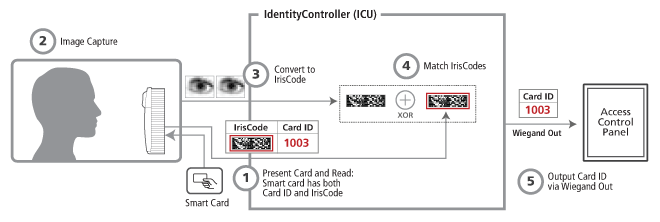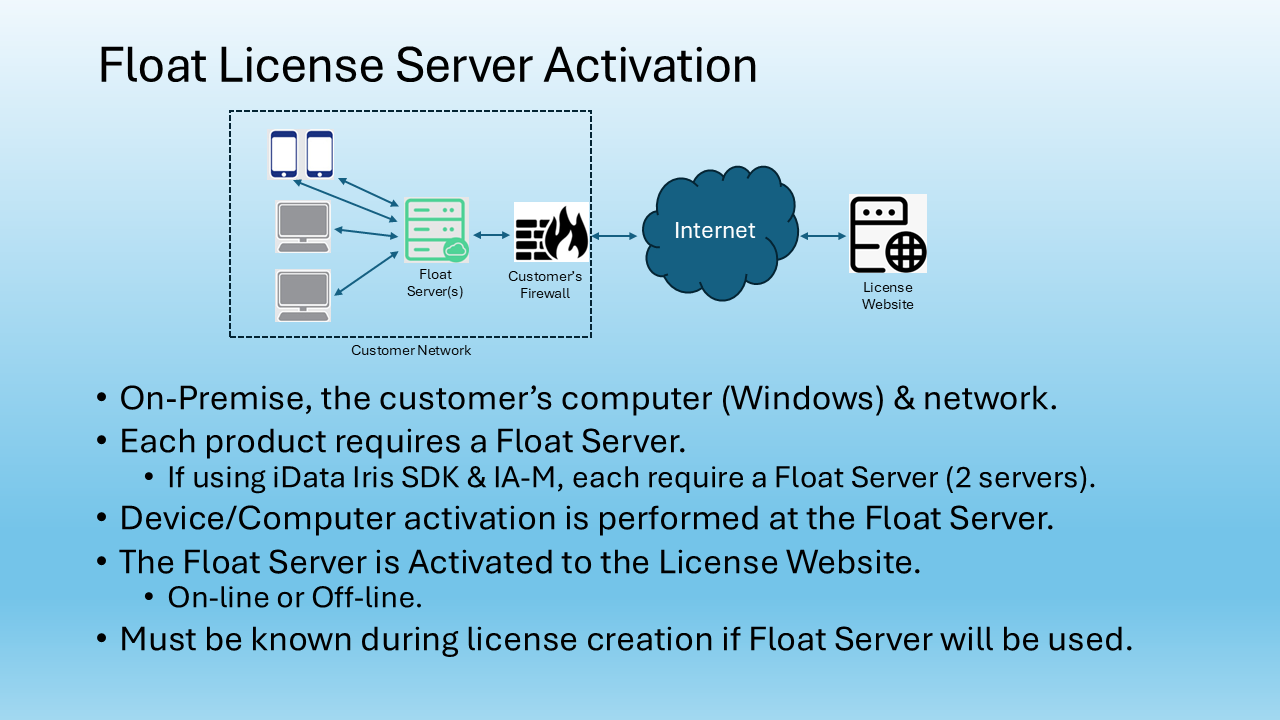Operation Modes
Iris recognition is the only biometric authentication technology specifically designed to work in a one-to many search mode. Authentication speed in 1:N is dependent on hardware, and there is no degradation of authentication integrity even as database sizes scale into the millions. Unlike other biometric technologies that produce a short list of possible. However the technology performs superbly in 1:1 verification modes with tokens or PINs.
Iris in the 1:N Search Identification Mode
- Iris recognition is ideal for use in the one to many search environment because the template is small and the ability to search large databases at speed with accuracy is unmatched by any biometric.
- A live present at the imager results in a conversion of that image to a template that is compared against all other templates in the database.
- Unlike other biometric technologies, that pull out a set of “possibles”, iris recognition uses the algorithmic parameters to establish only one best match.
- The probability of misidentification with one eye is 1 in 1.2 million. The probability of misidentification when two eyes are used is reduced by many orders of magnitude.
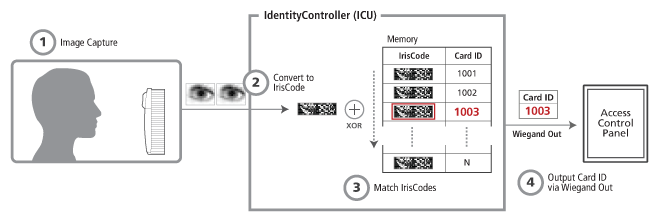
Iris in the 1:1 Verification Mode with a Prox Card
- When a subject is enrolled in iris recognition with a PROX card, 1:1 verification can still be achieved.
- At enrollment, the Wiegand number associated with the card is bound to the record and iris template of the individual being enrolled.
- After presenting the card to the reader, iCAM prompts the cardholder to look into the imager.
- Looking into iCAM results in creation of iris templates in the ICU or iCAM7000/7100.
- These templates are compared to iris templates and Wiegand numbers linked at the time of enrollment. If they are, a verification is made. If not, access is denied.
- Card holder association also allows the system to be programmed to automatically set the camera imager to the user’s height.
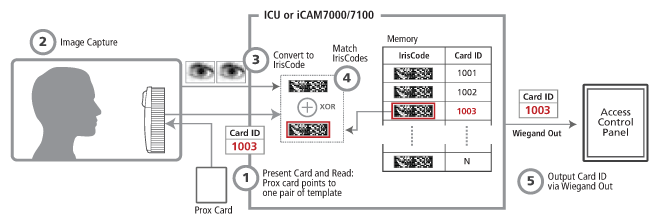
Iris in the 1:1 Verification Mode with a PIN
- At enrollment, a PIN number is associated with a users iris template and a Card ID of the individual being enrolled.
- Upon entering the PIN number on the keypad, iCAM prompts the user to look into the imager.
- The PIN points to an iris template pair in the database, to which the template created by the live present is compared.
- If the to templates are judged to be “matched” verification is made, and the card ID is output via the Wiegand port of the ICU.
- If templates are not matched , access is denied, and a reject ID is outpt from the ICU.
- The PIN prompt also allows the camera imager to auto-set to the user’s height.
- The token-PIN-multi-iris configuration also allows for scaled security threshold setting in response to varying levels in threat condition.
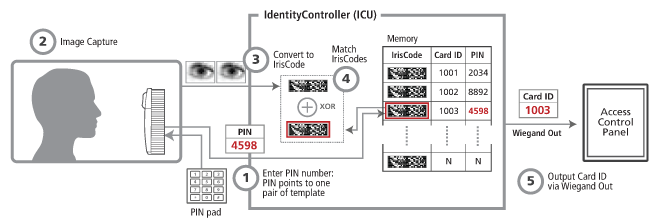
Iris in the 1:1 Verification Mode with a Smart Card
- The 512 byte size of an iris template allows 2 iris templates to be efficiently placed on a smart card. When smart cards are used, there is no need to maintain a central database, or poll a database to make the authentication decision.
- In the 1:1 verification mode, the smart card is placed against the iCAM adjacent to the card reader icon.
- When the iris template from the card is read, the card holder is prompted to look into the camera where and image is captured.
- If the template generated from the “live present” matches the stored value from the card, verification is successful and access is granted.
- When verification is made, the system signals the access control panel via Wiegand output.
- Card intelligence allows the system to be programmed to automatically set the camera imager to the user’s height.
